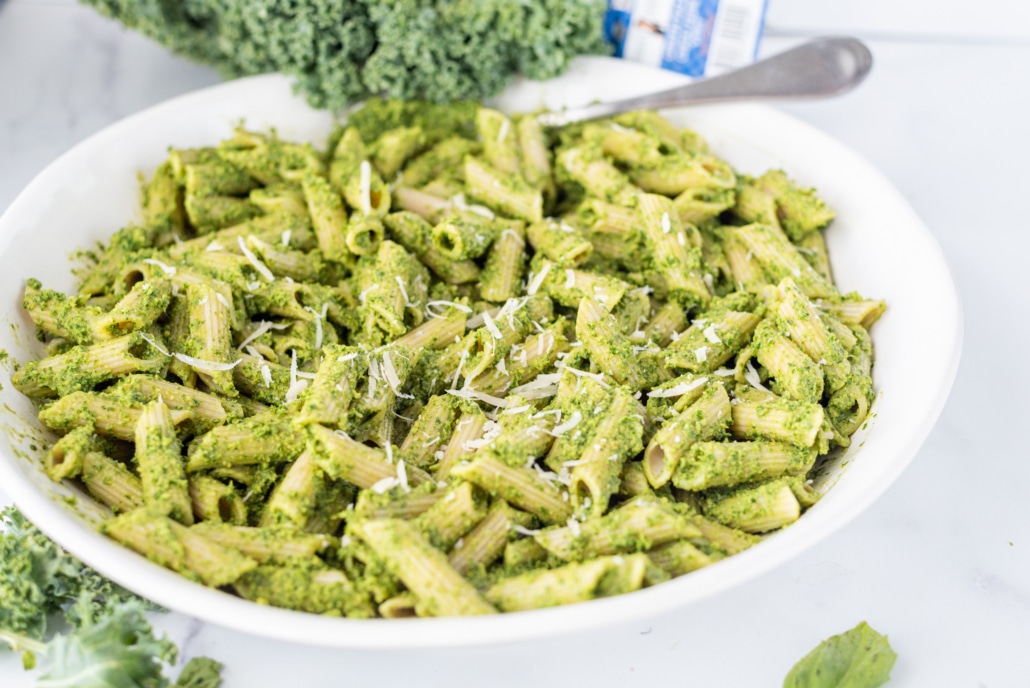
Mastering a green sauce can help you take your vegan cooking game to the next level. Let’s be honest, every plate looks better with a vibrant emerald-colored drizzle, and it makes the food taste even more delicious, too.
There are many different types of green sauce. The clue is in the name, but to qualify in this category, a sauce just needs to be green, and it’s usually uncooked. There are a few green sauces of world cuisines that are considered the best, most versatile, and most delicious of the green sauces. There’s green chutney from India, for example, as well as salsa verde from Italy and chermoula from Morocco. Green goddess salad dressing from California also counts as a green sauce. But here, we’re focusing on three of the most popular green sauces: pesto, chimichurri, and gremolata.
Find out more about what they are below, as well as how to cook with them, and how to use them in recipes.
The benefits of learning to cook with green sauce
Cooking with green sauce can give you more than an aesthetically pleasing meal. These sauces, which are usually made with green vegetables and herbs, like parsley and basil, are nutrient-rich. Plus, they are also packed with fresh, herbaceous flavor, and can help to enhance the overall taste of a dish.
Learning to master one or two types of green sauce can also help you improve your culinary skills. And that’s because they’re incredibly versatile and customizable; they can be used in dressings, marinades, and dips, and once you’ve learned the base recipe, you can adjust ingredients and proportions to complement your favorite dishes.
The differences between gremolata, chimichurri, and pesto (plus recipes!)
Keep reading to find out more about gremolata, chimichurri, and pesto—the holy trinity of the green sauce world.
1 Gremolata
A classic Italian condiment, gremolata is fresh, zesty, and versatile. It’s typically made with three main ingredients: finely chopped fresh parsley, lemon zest, lemon juice, salt, pepper, and olive oil. Some variations also include garlic. “It is so easy, fresh, and works on so many things,” renowned chef Giada De Laurentiis shared on TikTok (find her recipe for gremolata here).
Gremolata is often served with meat or seafood (find some of our favorite plant-based seafood recipes here), but it is also often added to soups and stews right before serving. Plus, it works well as a topping for light pasta dishes and roasted vegetables, too.
Try it in a recipe: Vegan Potato Leek Soup With Broccoli Gremolata
2 Pesto
Another Italian favorite, pesto is one of the most famous green sauces, and for good reason. It’s thick and aromatic, and it goes with everything. “It’s excellent on pasta, but it’s also great smeared on pizza,” Epicurious notes. “Thin it with a little extra oil and it makes a great finishing sauce for a raw tomato salad or some roasted cauliflower. Or of course you can just put it in a bowl and dip your bread in it and be transported to basil cloud nine.”
Unlike gremolata, there’s a little bit more to pesto than mixing up a few ingredients. Its key components are fresh basil, garlic, pine nuts, olive oil, and parmesan cheese, and it’s usually crushed together using a mortar and pestle.
Because parmesan is made with rennet, pesto isn’t vegan (or vegetarian, for that matter) in its traditional format, but it’s easy to find plant-based parmesan.
Try it in recipes: Two-Step Oil-Free Vegan Kale Pesto Pasta; Vegan Spicy Cauliflower Wings With Pesto Dipping Sauce; and Lemony Pumpkin Seed Pesto Pasta
3 Chimichurri
Chimichurri is different from pesto and gremolata in many ways. For one, it’s not from Italy, but Argentina. It’s also made with red pepper flakes, which add a kick of heat, as well as vinegar, which brings some acidity to the sauce.
However, similar to its green sauce cousins, chimichurri also contains a blend of fresh herbs (usually parsley), as well as garlic and olive oil, too. To make chimichurri, the ingredients are finely chopped and then mixed together. Some versions use a food processor for convenience, while others prefer a more rustic, hand-chopped texture.
Chimichurri is often served with grilled meat (vegan meat works just as well!), but it also tastes delicious with roasted vegetables and as a dipping sauce, too.
Try it in recipes: Vegan Chimichurri Roasted Sweet Potato Bowl; Sizzling Zucchini With Tzatziki and Vinegary Chimichurri; and Vegan Cauliflower Steaks With Chimichurri Sauce
This post was originally published on VegNews.com.


